Step 1 Check the materials you get!
In the real world, not every component is simply composed by single element, there is no one-size-fit-all approach and you need to deal with diversity of materials.
If you want to separate materials, the first step is always to check what kind of materials you get.
Let’s say you get a waste that consists of plastics and iron (a mixture) and another one contains plastic (a pure substance).
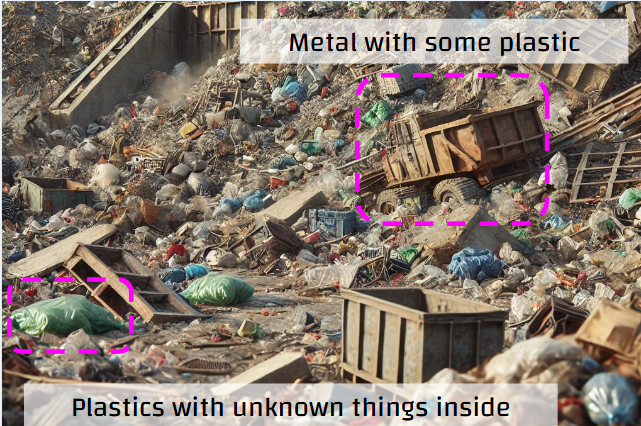
Step 2 Investigate their properties!
Materials have many properties (size, density…). They can be pure substances and mixtures.
You need to find the differences between their properties.
For one property, the larger the difference, the easier the separation.
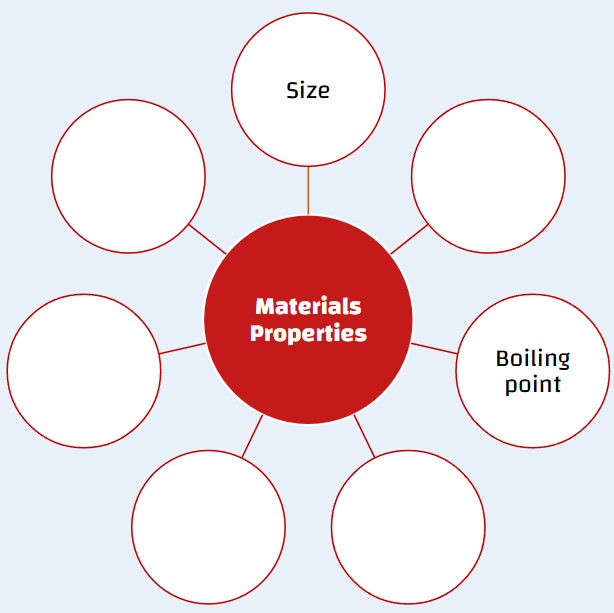
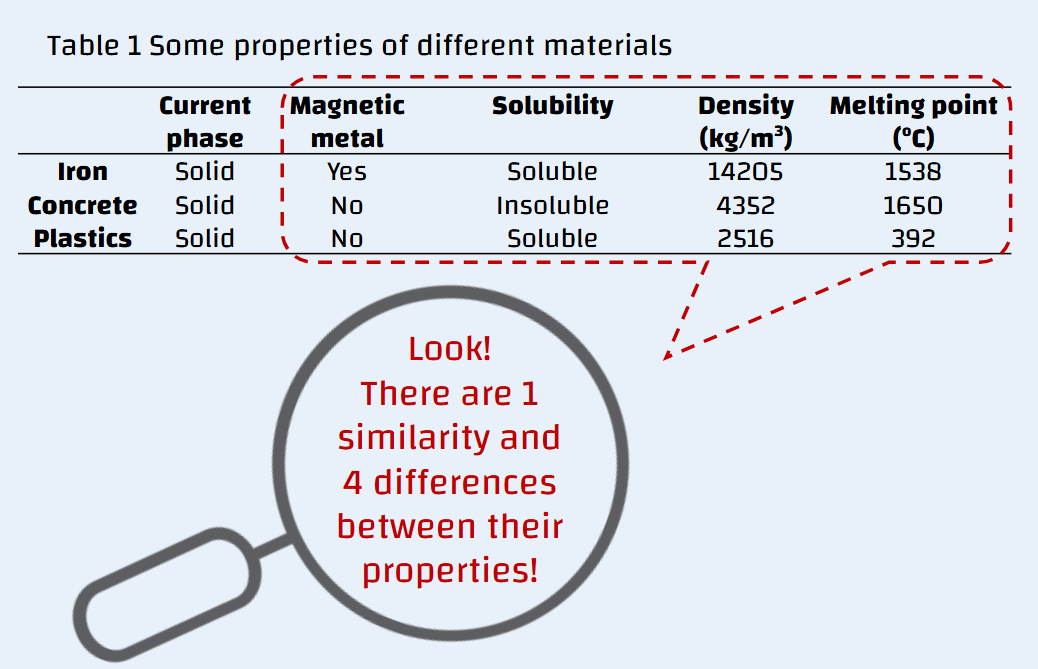
Step 3 Let's select processors!
There is a wide range of technologies and methods available for waste management, each with its own advantages and limitations.
The appropriateness of a particular technology or method can vary greatly depending on the local context, properties of waste materials, environmental regulations, and available resources.
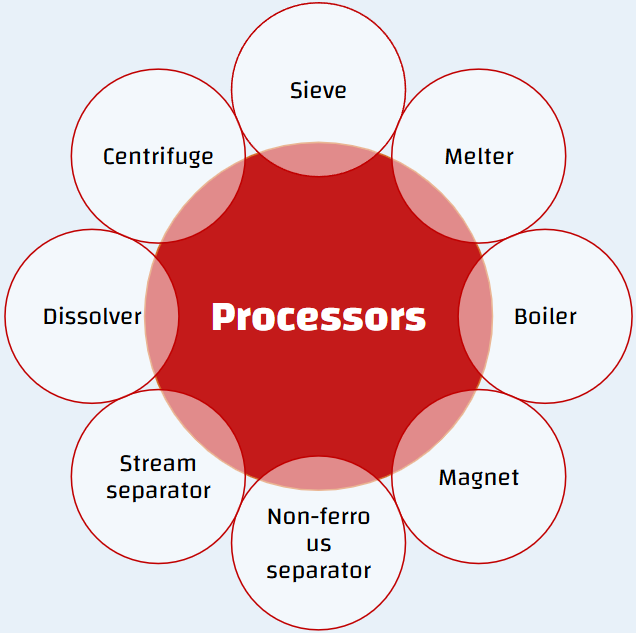
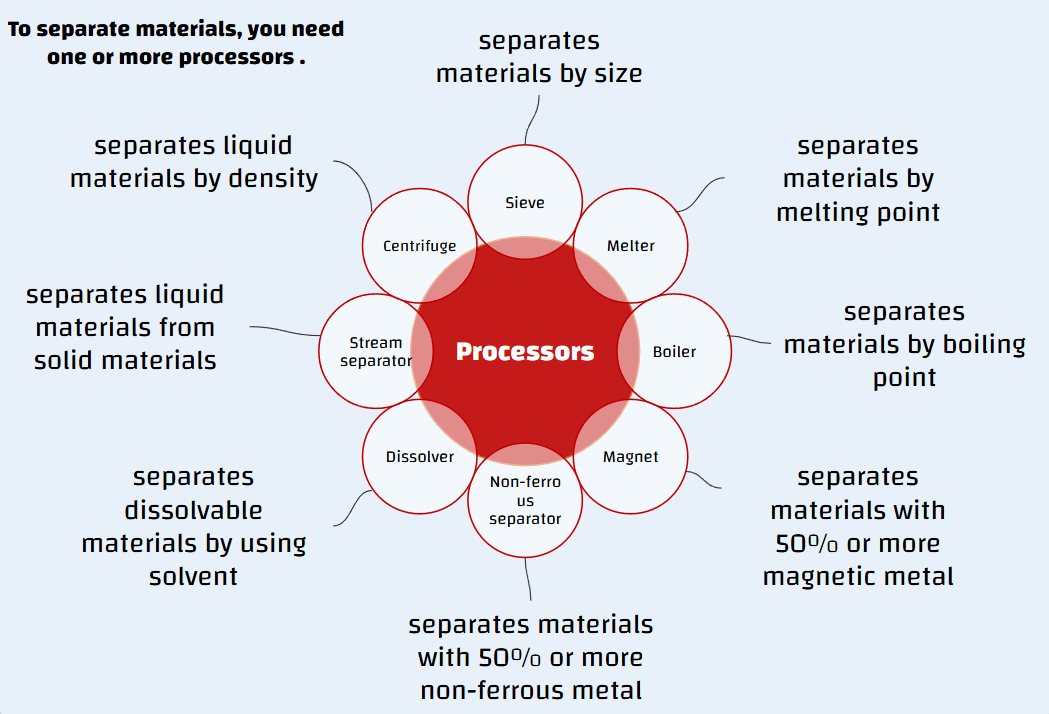
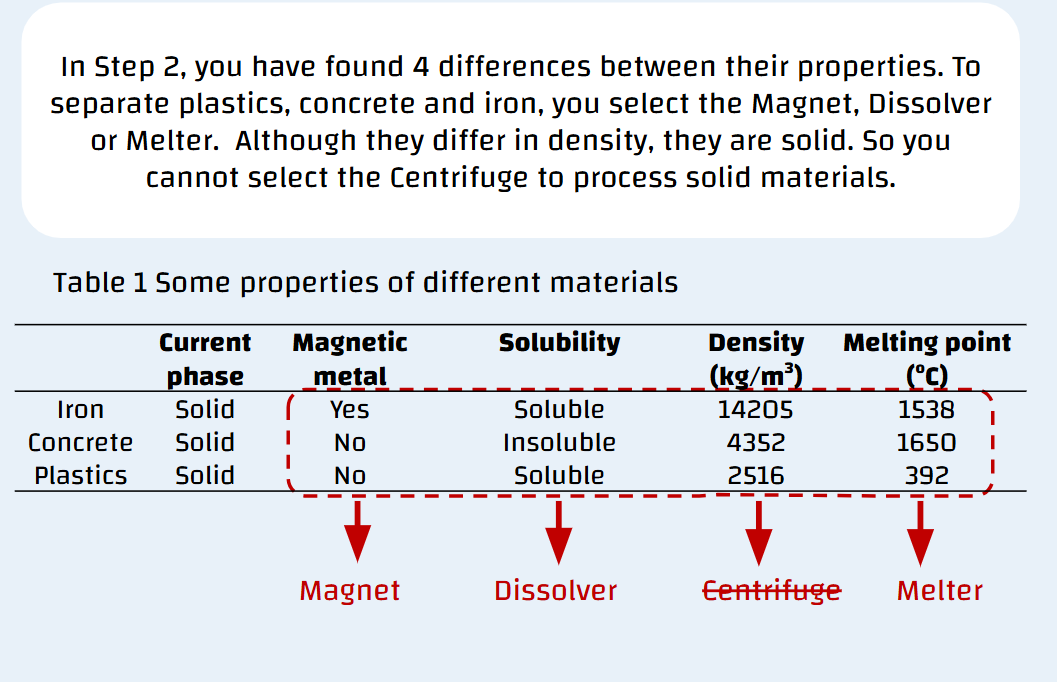
Step 4 Time to sequence processors!
For complex materials, you need multiple processors.
To separate plastics, concrete and iron, you need to select among the Magnet, Dissolver and Melter.

